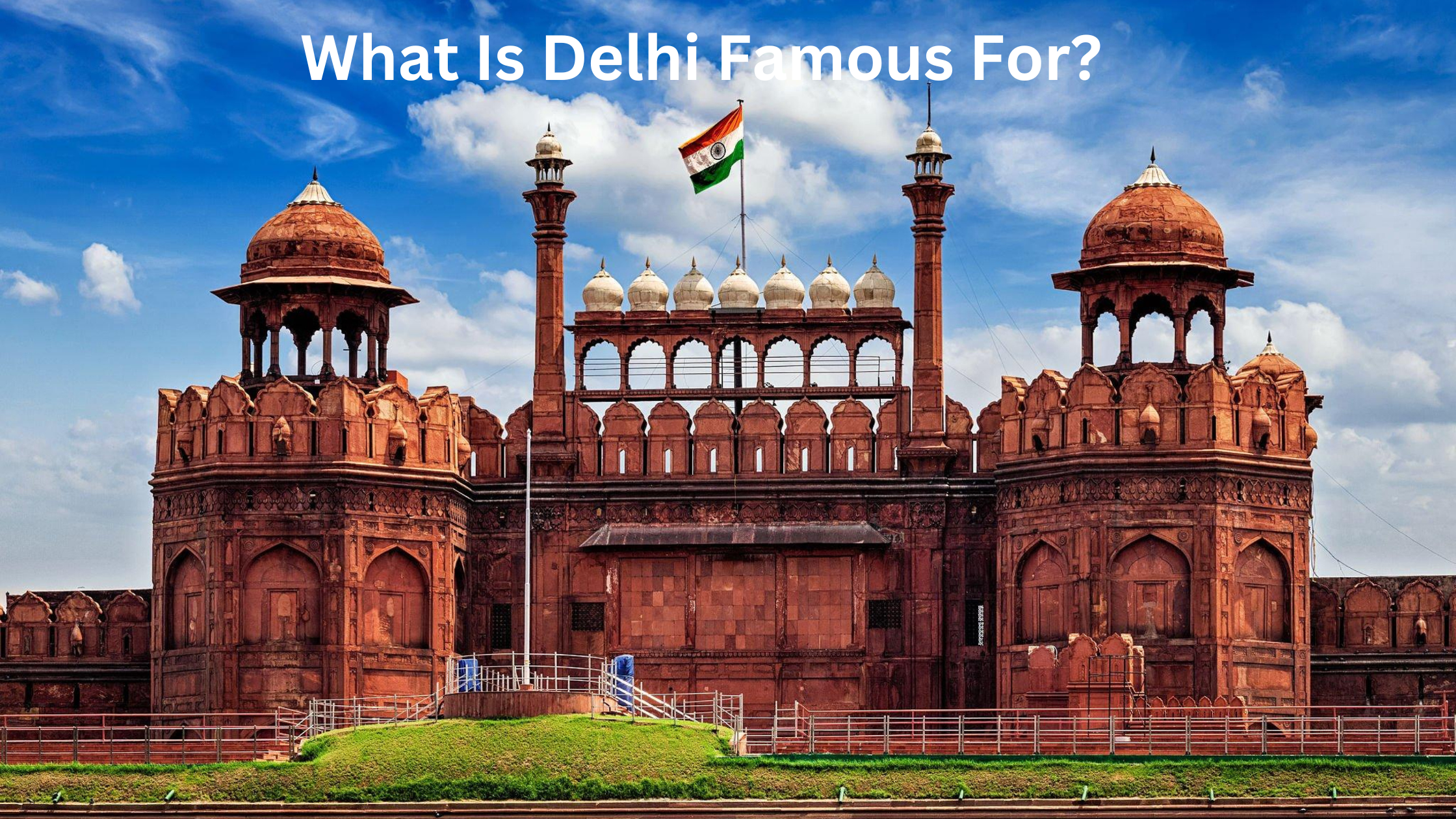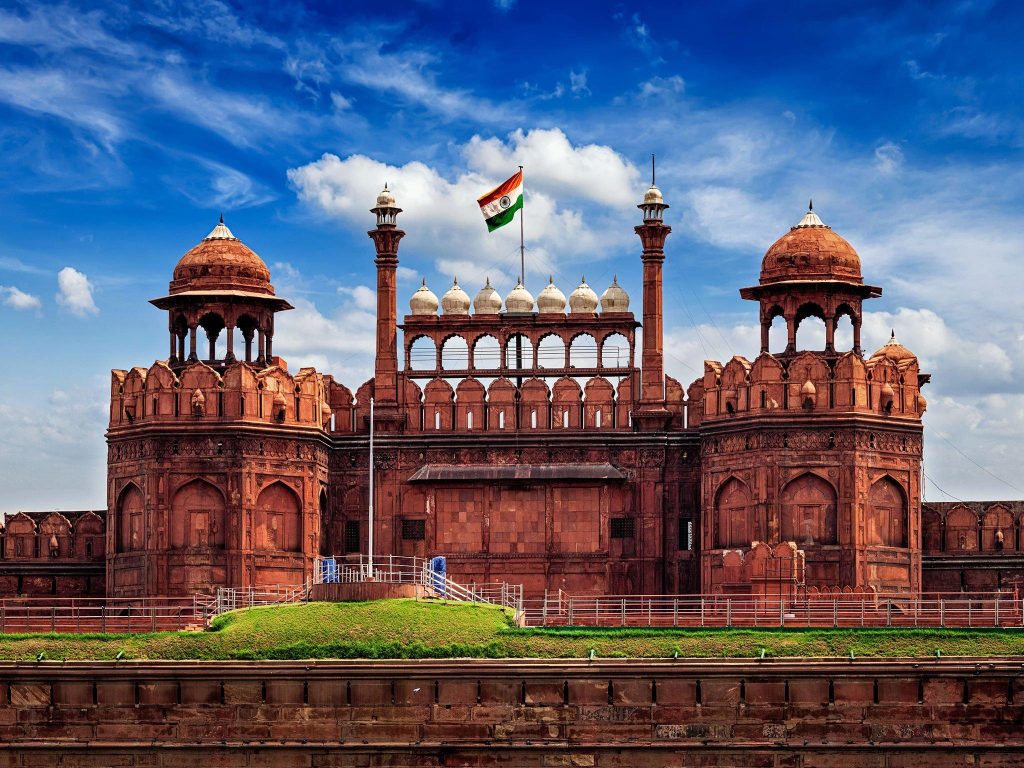
Delhi, the vibrant capital of India, is a city that wears its history and modernity with equal pride. From majestic forts that echo the tales of ancient empires to contemporary architectural marvels that redefine the skyline, Delhi is a treasure trove of cultural, historical, and natural wonders.
In this journey through the heart of Delhi, we will explore a tapestry of landmarks that have etched their stories into the city’s very soul.
From the renowned Red Fort to the serene Lodhi Gardens, and from the spiritual sanctuary of Gurudwara Bangla Sahib to the captivating mysteries of The Jantar Mantar Observatory, each of these places embodies a unique aspect of Delhi’s character. For more insights into Virginia’s distinct highlights, check out “Prominent VA highlights“.
Join us as we embark on a voyage of discovery, uncovering the essence of what makes Delhi famous—a mosaic of history, culture, and innovation that continues to captivate hearts around the world.
Contents
- 1 Red Fort
- 2 Qutub Minar
- 3 Chandni Chowk
- 4 Sansad Bhavan
- 5 Gurudwara Bangla Sahib
- 6 Lodhi Gardens
- 7 India Gate
- 8 Akshardham
- 9 Agrasen Ki Baoli
- 10 The Lotus Temple
- 11 Jama Masjid
- 12 Humayun’s Tomb
- 13 Purana Qila (The Old Fort)
- 14 The Jantar Mantar Observatory
- 15 The National Museum
- 16 National Zoological Park
- 17 The Hauz Khas Complex
- 18 Conclusion
Red Fort
Nestled at the heart of Delhi, the Red Fort stands as a resplendent testament to the grandeur of Mughal architecture and its profound historical significance. Constructed under the patronage of Emperor Shah Jahan during the 17th century, the fort’s majestic red sandstone walls adorned with intricate carvings provide visitors with a captivating journey back to an era characterized by opulence and elegance.
Just as the Red Fort embodies cultural heritage, explore Oklahoma’s cultural heritage to delve into the rich tapestry of history, arts, and traditions that define the state.
The fort’s colossal gates and imposing walls served as protective barriers, enclosing an array of palaces, gardens, and audience halls within.
The Red Fort’s significance goes beyond its architectural splendor. It was the site where India’s tricolor flag was hoisted for the first time after gaining independence from British rule in 1947. The annual Independence Day celebrations held here continue to attract both locals and tourists, creating a sense of national pride and unity.
Qutub Minar
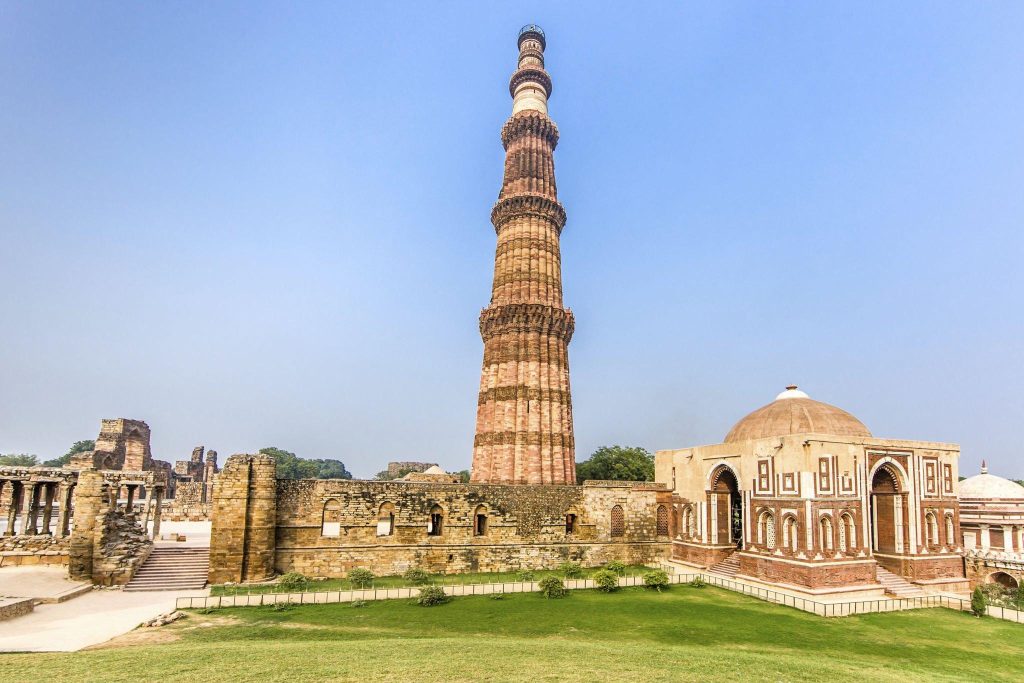
Just as captivating is the Qutub Minar, a towering masterpiece that proudly overlooks Delhi’s landscape. The minaret’s towering height and intricate Islamic architecture are a tribute to the city’s diverse cultural influences.
Commissioned by Qutb-ud-din Aibak in the 12th century, the Qutub Minar stands as a symbol of victory, marking the beginning of the Muslim rule in India. If you’re interested in exploring more iconic landmarks and specialties of different regions, you might want to check out “Discovering Texas’ Specialties” on Tales of Travelers.
The complex surrounding the minar is equally mesmerizing. The Quwwat-ul-Islam Mosque, adorned with ornate carvings and intricate calligraphy, showcases the artistic excellence of that era.
The Iron Pillar, with its rust-free composition and enigmatic origins, leaves archaeologists and scientists puzzled to this day. Exploring the Qutub Minar complex not only offers a glimpse into Delhi’s history but also fosters a sense of wonder about the technological prowess of ancient times.
Chandni Chowk
Transitioning from historical monuments to bustling markets, Chandni Chowk is a living testament to Delhi’s ever-evolving cultural fabric. The name “Chandni Chowk,” meaning “Moonlit Square,” evokes images of vibrant bazaars, narrow lanes, and an atmosphere steeped in tradition. This bustling market has witnessed centuries of history, trade, and cultural exchange.
Walking through Chandni Chowk is a sensory delight. The aroma of street food mingles with the colorful display of textiles, jewelry, and electronics.
Its labyrinthine lanes lead to treasures both old and new, from traditional sweet shops like Ghantewala to modern boutiques showcasing contemporary fashion. Chandni Chowk’s iconic Parantha Wali Gali offers an unforgettable culinary journey with its delectable paranthas and nostalgic charm. If you’re seeking a different kind of paradise, Vermont is also known for its stunning natural landscapes, making it a skiing paradise.
With its picturesque mountains and pristine snow, it’s a haven for winter sports enthusiasts. Whether you’re exploring the bustling streets of Chandni Chowk or hitting the slopes in Vermont, there’s something for everyone to enjoy.
Amidst the chaos, Chandni Chowk maintains its allure through the preservation of age-old traditions. The market’s ability to blend the past and present makes it a microcosm of Delhi’s essence—a place where history and modernity coexist harmoniously.
Sansad Bhavan
Sansad Bhavan, also known as the Parliament House, is a symbol of India’s democratic foundation. Nestled amidst the city’s hustle and bustle, this circular edifice is where the nation’s laws are debated, decisions are made, and the voices of the people find resonance.
The architectural marvel, designed by Sir Edwin Lutyens, showcases a blend of Indian and British architectural styles, echoing the spirit of unity in diversity.
The grandeur of Sansad Bhavan extends beyond its physical structure. It’s a testament to the democratic values that form the cornerstone of India’s governance.
The structure’s circular design fosters an environment of inclusivity and discussion, embodying the essence of a functioning democracy. As you stand in its shadow, you’re not just witnessing an architectural masterpiece but a living testament to the power of collective decision-making. If you’re interested in exploring more highlights of Washington State, consider checking out “Discover WA State Highlights” for a deeper dive into what this beautiful region has to offer.
Gurudwara Bangla Sahib
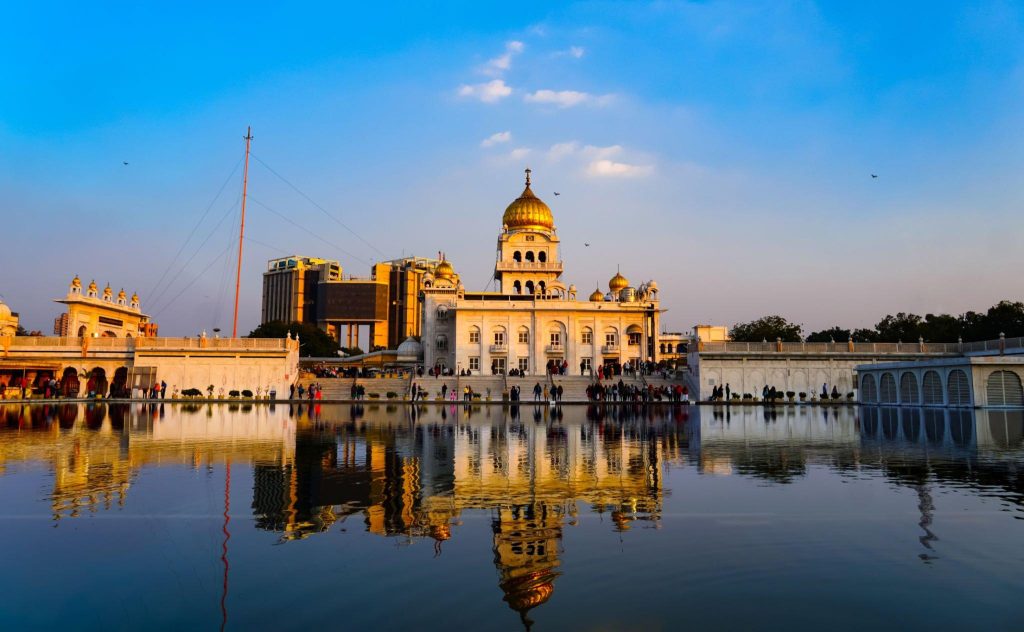
In the heart of Delhi lies Gurudwara Bangla Sahib, a spiritual haven that welcomes people of all faiths. This Sikh Gurudwara not only holds religious significance but is also a symbol of selfless service and compassion.
The glistening Sarovar (pool) at its center and the soothing Kirtan (spiritual hymns) sung within its walls create an atmosphere of tranquility amidst the bustling city.
Gurudwara Bangla Sahib stands out for its remarkable Langar, a communal kitchen that generously provides free meals to all its visitors. This inclusive practice transcends social barriers and backgrounds, welcoming everyone to participate in the beautiful act of sharing and unity. The selfless service of the Gurudwara serves as a poignant reminder of the enduring values of compassion and community, which are so crucial in our fast-paced world. Discover more about such heartwarming experiences at Acadia National Park wonders.
Lodhi Gardens
A tranquil oasis in the heart of the city, Lodhi Gardens offers a retreat into nature’s embrace. Amidst the chaos of urban life, this historical park houses the tombs of rulers from the Lodhi and Sayyid dynasties, seamlessly blending architecture and greenery. The well-maintained gardens and water bodies provide a serene environment for relaxation, exercise, and reflection.
Lodhi Gardens are not merely a respite from the city’s hustle; they’re also a repository of Delhi’s history. The ancient structures, adorned with intricate carvings and Persian inscriptions, transport visitors to a bygone era.
The juxtaposition of historical remnants and natural beauty creates an ambience where one can savor the joys of solitude while being surrounded by living history.
India Gate
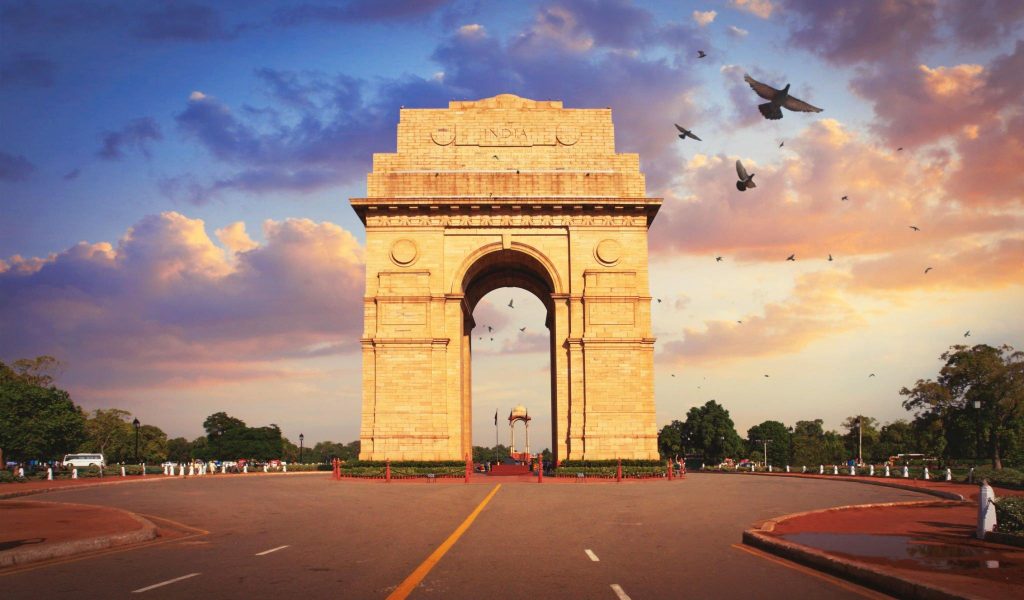
One of Delhi’s most iconic landmarks, the India Gate, stands tall as a tribute to the soldiers who sacrificed their lives in World War I.
The imposing archway, designed by Sir Edwin Lutyens, is a solemn reminder of the nation’s gratitude and respect for those who served. The Amar Jawan Jyoti, a flame that perpetually burns beneath the arch, pays homage to the unknown soldiers.
India Gate is more than just an architectural masterpiece; it’s a symbol of unity and patriotism. The monument’s sprawling lawns serve as a popular gathering place for both locals and tourists, offering a space to relax, unwind, and pay homage.
As the sun sets and the monument is illuminated, the India Gate becomes a beacon of hope, igniting the spirit of nationalism in all who behold it.
Akshardham
Akshardham, a modern architectural marvel, seamlessly blends spirituality, art, and technology. The sprawling complex, inspired by the teachings of Swaminarayan, captivates visitors with its intricate carvings, tranquil surroundings, and a captivating water show. The monument’s central piece, the Akshardham Mandir, stands as a tribute to timeless architecture and devotion.
The experience at Akshardham extends beyond its aesthetic appeal. The Sahaj Anand Water Show narrates stories of ancient wisdom through water, light, and sound—a mesmerizing synthesis of art and spirituality. The Akshardham complex serves as a tranquil oasis amidst the city’s chaos, inviting visitors to reflect, marvel at human creativity, and seek moments of serenity.
Agrasen Ki Baoli
Agrasen Ki Baoli, an enigmatic stepwell, stands as a relic of Delhi’s past, offering a glimpse into its architectural ingenuity. The baoli’s intricate symmetrical steps leading to the water reservoir below evoke a sense of awe and mystery. Its historical significance and remarkable design make it a favorite among history enthusiasts and photographers alike.
While its origin remains shrouded in mystery, Agrasen Ki Baoli’s haunting beauty is undeniable. The echoes of footsteps on its stone steps create an ambiance that transports visitors to a bygone era. The baoli’s tranquil atmosphere amidst the bustling city is a testament to its enduring allure. If you’re intrigued by hidden gems like this, you might also appreciate exploring some of Indiana’s hidden gems, which have their own unique charm and secrets waiting to be discovered.
The Lotus Temple
The Lotus Temple, with its distinctive lotus-like design, is not only an architectural marvel but also a symbol of unity and spirituality. This Bahá’í House of Worship welcomes people of all faiths to meditate, reflect, and find solace in its serene surroundings. The temple’s awe-inspiring structure is matched only by its ethos of inclusivity and unity.
The Lotus Temple’s simplicity and grace are a departure from traditional religious architecture. Its design, characterized by the interconnected petals of a lotus, signifies the universality of divine beauty and truth. As sunlight filters through the lotus petals, casting intricate patterns within, visitors are reminded of the interconnectedness of all humanity.
Jama Masjid
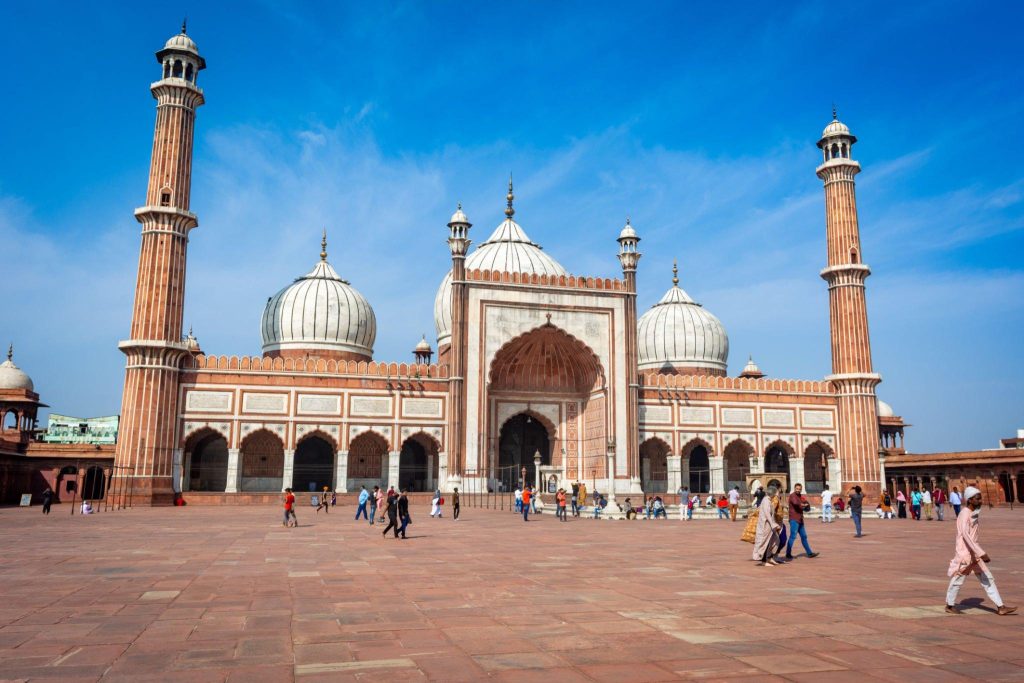
Jama Masjid, a jewel of Mughal architecture, stands as a testament to Delhi’s famous historical and cultural diversity. Commissioned by Emperor Shah Jahan, the mosque’s grand courtyard and towering minarets are a blend of red sandstone and marble, exuding an aura of magnificence. The mosque’s intricate carvings and detailed calligraphy showcase the mastery of Mughal artisans.
Jama Masjid’s significance goes beyond its architectural brilliance; it’s a spiritual haven for Muslims and a cultural landmark for all. The mosque’s vast courtyard accommodates thousands of worshippers during Friday prayers, creating an atmosphere of unity and devotion.
Climbing the minarets offers a panoramic view of Delhi, a reminder that this historical site is also a window to the city’s evolving skyline.
Humayun’s Tomb
Humayun’s Tomb, a UNESCO World Heritage Site, is a captivating fusion of Persian and Indian architectural styles. Commissioned by Emperor Humayun’s widow, Haji Begum, in the 16th century, the tomb’s grandeur sets the stage for Mughal architectural excellence.
Its symmetrical gardens, intricate lattice work, and red sandstone façade create an ethereal ambiance that transports visitors to a bygone era.
What makes Humayun’s Tomb even more remarkable is its role as an architectural precursor to the Taj Mahal. Its design influenced the creation of the Taj Mahal, as it was the first garden-tomb on the Indian subcontinent.
The delicate balance between Persian and Indian aesthetics showcases the cross-cultural influences that shaped India’s artistic landscape.
Purana Qila (The Old Fort)
Purana Qila, with its imposing walls and ancient ruins, unfolds the layers of Delhi’s history with each step. Believed to stand on the site of the mythical city of Indraprastha, mentioned in the Mahabharata, the fort’s history spans centuries, witnessing the rise and fall of empires.
The walls encircle an array of structures, including the Qila-i-Kuhna Mosque and the Sher Mandal, creating a journey through time.
The fort’s architecture reflects the transition from Afghan to Mughal rule, with both styles harmoniously coexisting. The structure’s red sandstone walls and the serene waters of its lake provide an escape from the city’s hustle, inviting visitors to ponder the lives and stories embedded in its walls.
The Jantar Mantar Observatory
The Jantar Mantar Observatory, a UNESCO World Heritage Site, is a testament to India’s scientific acumen during the Mughal period. This astronomical marvel, commissioned by Maharaja Jai Singh II in the 18th century, comprises a collection of architectural instruments designed to measure celestial movements with astonishing accuracy.
Walking through The Jantar Mantar is like entering a celestial laboratory. Its giant sundial, the Samrat Yantra, is capable of measuring time with unparalleled precision.
The Misra Yantra, a complex instrument, allows astronomers to calculate the shortest and longest days of the year. The observatory’s intricate structures and mathematical precision highlight India’s historic contributions to the field of astronomy.
The National Museum
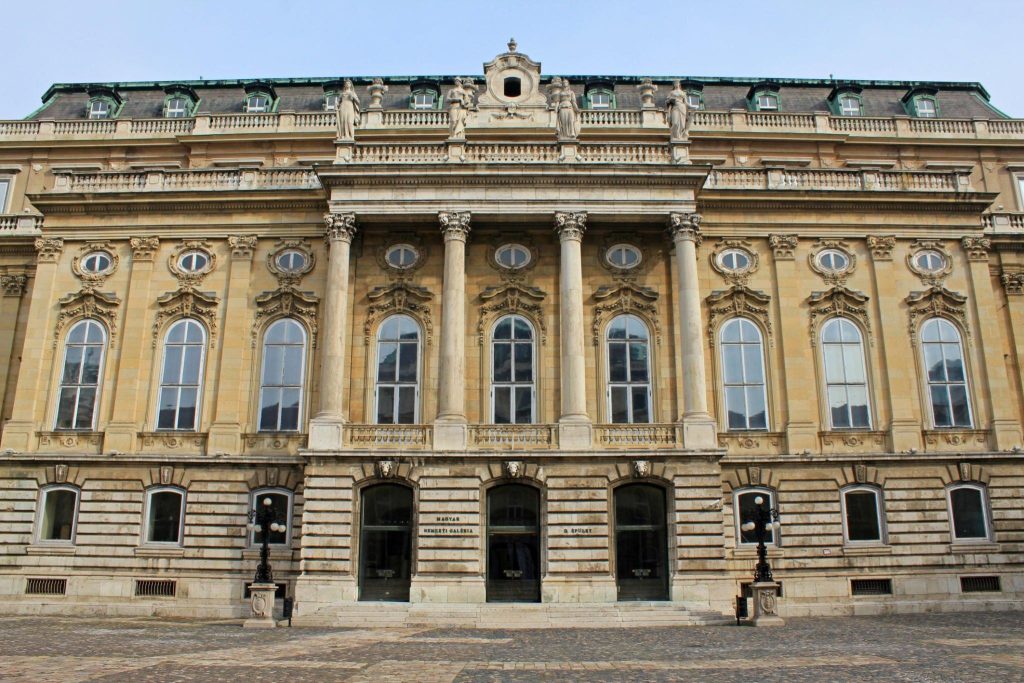
The National Museum stands as a custodian of India’s artistic, cultural, and historical legacy. This repository of treasures spans centuries, housing an extensive collection of artifacts, sculptures, textiles, and more. As you traverse its halls, you embark on a journey through India’s past, witnessing the evolution of its diverse cultures and traditions.
The museum’s galleries offer insights into various aspects of India’s history, including ancient civilizations, art forms, and the intricacies of daily life.
The exquisite artifacts, ranging from sculptures to miniature paintings, narrate stories of kings and queens, gods and goddesses, and the ebb and flow of dynasties. A visit to The National Museum is an immersive experience that fosters a deep appreciation for India’s rich cultural tapestry.
National Zoological Park
Amidst the urban landscape, the National Zoological Park provides a haven for biodiversity conservation and education. This sprawling sanctuary is home to a diverse range of animals, from majestic tigers to playful primates. As you explore its habitats, you gain a renewed sense of wonder about the animal kingdom’s beauty and diversity.
The National Zoological Park serves as an educational platform, enlightening visitors about the importance of wildlife conservation. Through exhibits and interactions, it fosters an understanding of the delicate balance between human existence and the natural world.
The park’s efforts in breeding endangered species and providing humane care exemplify its dedication to preserving India’s wildlife heritage.
The Hauz Khas Complex
The Hauz Khas Complex presents a seamless blend of ancient history and contemporary creativity. This urban oasis encompasses an ancient water reservoir, historic monuments, and a vibrant arts and culture scene. The complex’s allure lies in its ability to bridge the gap between past and present, offering a unique experience for visitors.
The historic structures within The Hauz Khas Complex, including a madrasa and a mosque, whisper tales of Delhi’s medieval era. However, it’s the modern-day boutiques, art galleries, and cafes that infuse the area with a bohemian charm. The complex’s lake, surrounded by lush greenery, offers a serene backdrop for leisurely strolls and introspection.
Conclusion
As our expedition through Delhi’s cultural, historical, and natural gems comes to an end, we find ourselves immersed in the multifaceted allure that defines this remarkable city. Delhi’s landmarks stand not only as testaments to the past but as bridges to the future, seamlessly blending tradition and innovation.
From the resplendent Humayun’s Tomb to the bustling lanes of Chandni Chowk, from the spiritual serenity of The Lotus Temple to the grandeur of India Gate, each destination has woven itself into the intricate fabric of Delhi’s identity.
These landmarks aren’t just monuments; they are threads that collectively narrate Delhi’s narrative—a narrative of resilience, diversity, and a timeless pursuit of excellence. As we bid adieu to this captivating journey, we carry with us the echoes of Delhi’s past, the vibrancy of its present, and the promise of its future.
Delhi’s fame is not confined to a single era—it’s a continuum, a symphony that resonates through time, inviting us to unravel its mysteries, embrace its charms, and immerse ourselves in its unending story.

